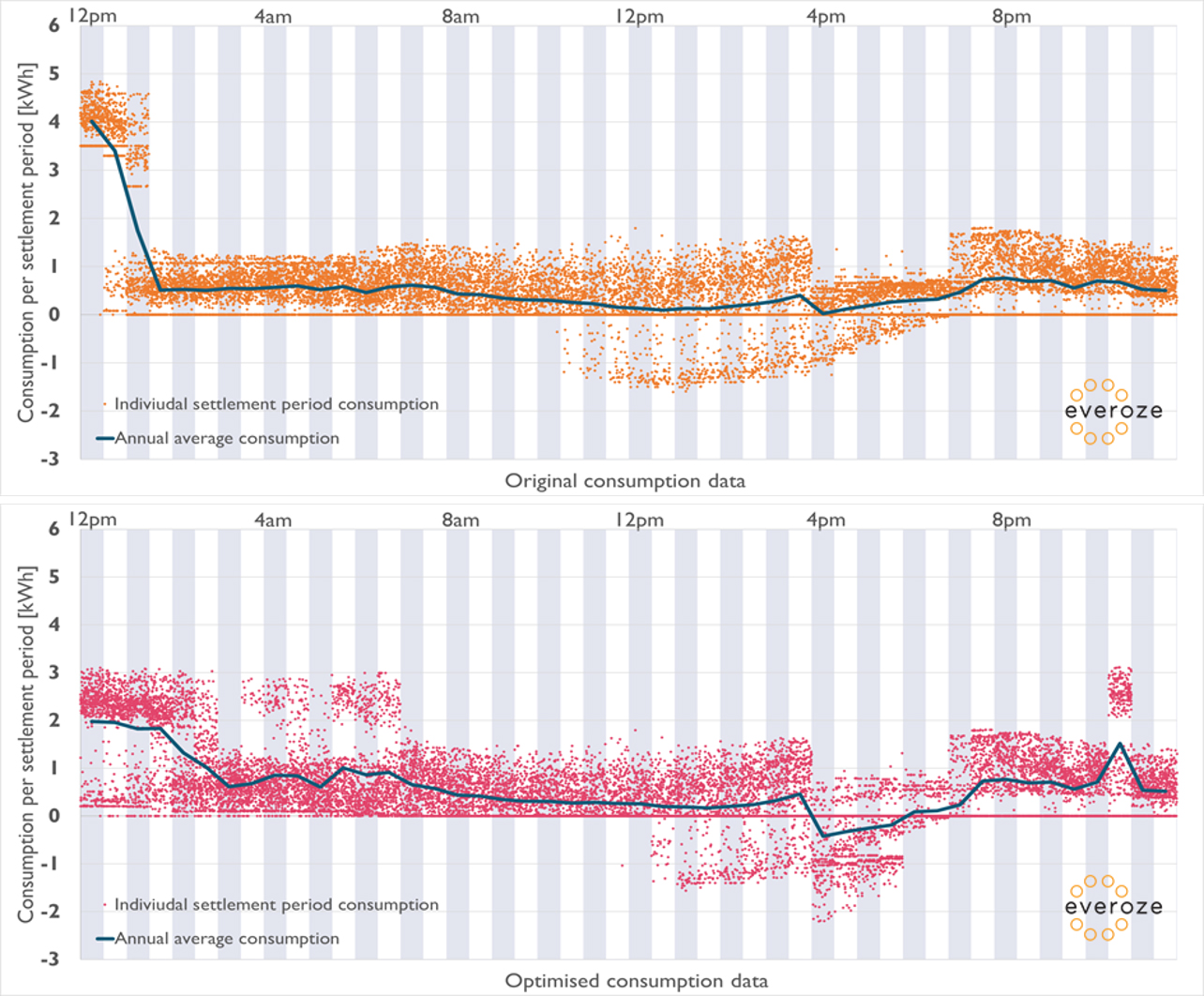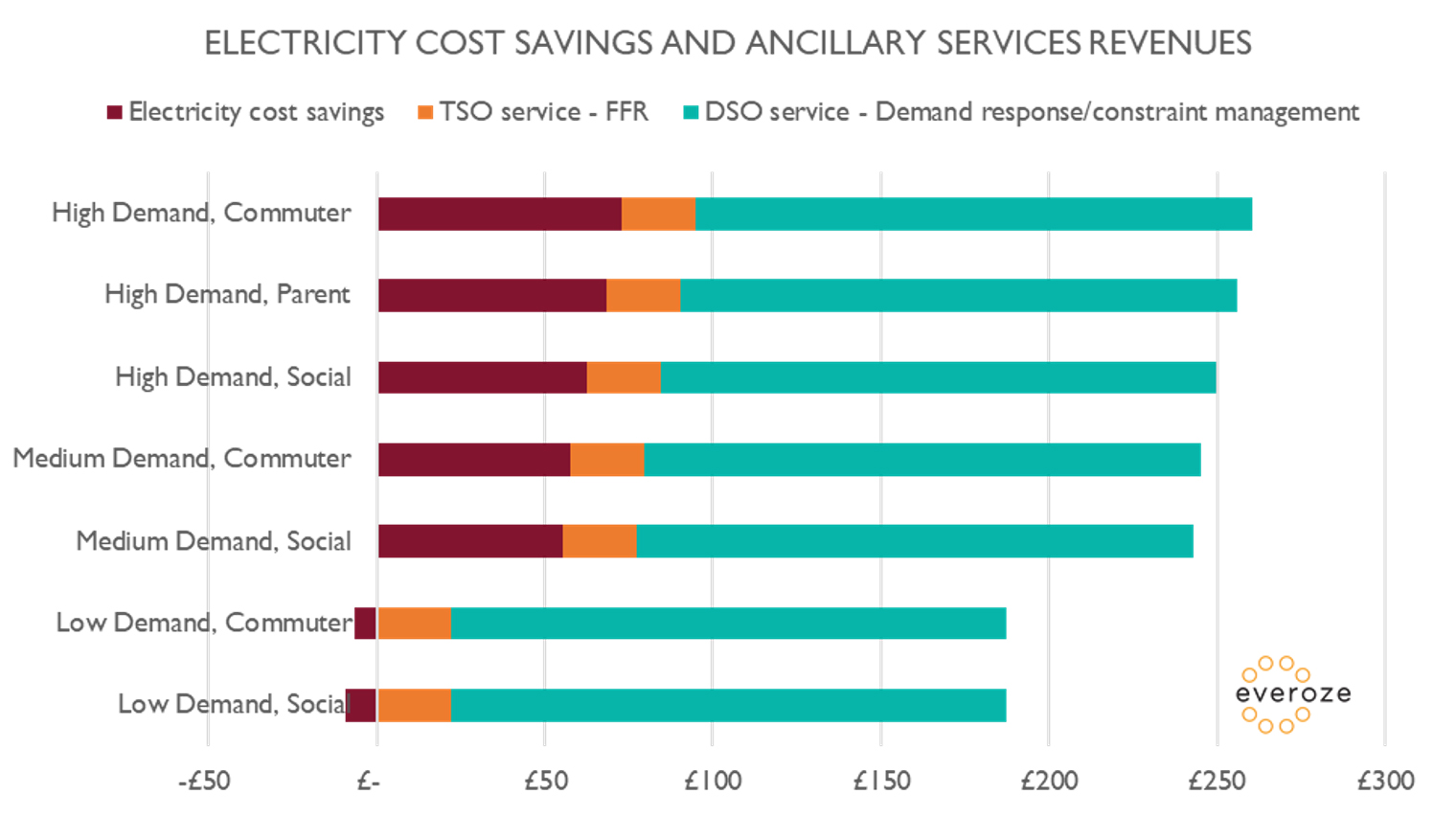Coordinated control of heat pumps, EVs and batteries in the home can reduce domestic peak network loads by 35%
April 2020
The coordinated control of multiple domestic flexibility assets offers significant peak load shifting potential for the DSO as well as offering economic benefits to the consumer
Domestic flexibility – why does it matter?
The UK Government has been making some moves in the electrification of the heating and transport sectors as part of its wider decarbonisation strategy and its Net Zero commitments for 2050. There are a fair few challenges in transforming our transportation system and the way we heat our homes. Ofgem’s Decarbonisation Action Plan published in February 2020 recognises some of these challenges, and the actions proposed are certainly pushing efforts in the right direction.
One of the key challenges as part of this transition is how we accommodate the additional electrical load on the network from decarbonising heat and transport – ie., from heat pumps, electric vehicle charging, etc. Let’s face it, we have the technology for low carbon heating and transport, but as things stand, our electricity network simply cannot accommodate these low carbon technologies in meaningful volumes. If you and all your neighbours replaced your gas boilers with heat pumps, your diesel estates with electric cars, what happens to the transformer upstream in the network on those cold winter days when everyone’s heating is working flat out and you all come home from work and want to charge your car batteries too?
It’s clear electrification of the heat and transport sectors present a significant challenge to the likes of Western Power Distribution, one of Britain’s six Distribution System Operators (DSO). Adding in more wires and reinforcing the network is a very expensive way to address this challenge. Although some network reinforcement will still be needed, DSOs will need to rethink their network planning strategy and move away from the traditional approach of network sizing based on winter peak-demand. And the DSOs are factoring this in their plans for the RIIO-2 price control period set to kick-in April 2023.
Some consider these disruptive demand technologies the source of the problem – in fact, the tables can be flipped around and these distributed hyper-local assets in the home can become a key part of the solution to address these challenges. By leveraging their flexibility and coordinating the operation of these assets using intelligent controls, it is possible to actively manage the load profile of the household and deliver significant value to the DSO.
This in a nutshell is the thesis of the Multi-Asset Demand Execution (MADE) project. MADE is a Network Innovation Allowance-funded project led by PassivSystems with Western Power Distribution (WPD) as the DSO.
How does domestic flexibility help address these network challenges?
As part of the MADE project, Everoze developed a techno-economic model to evaluate the benefits of multi-asset coordinated delivery of flexibility at a domestic level. We focused our modelling at a single residential property level, considering various flexible low carbon technologies such as solar PV, EVs with bi-directional chargers, stationary storage and hybrid heating systems for different consumer archetypes.
The graphs below show the modelling outcomes for one of the consumer types modelled. The consumption patterns for both i) the reference case with low carbon technologies and no coordinated flexibility provision (orange graph), as well as ii) the optimised case where the low carbon technology assets operate in a coordinated manner to provide flexibility (red graph) are shown.
| Note on the graph data: The individual data points represent all the 30-minute settlement periods over the year modelled. For better visualisation of the data, the individual settlement period consumption values are randomly spread across the settlement period they fall in. |
These graphs show that by employing an intelligent and coordinated control of the low carbon technology assets, the property’s consumption pattern can be optimised in a way that the peak loads can be reduced by approximately 35-40% compared to the reference case. This level of demand reduction could be a real benefit to the DSO.
The load pattern at a property level can be optimised and limited to a fraction of the fuse limits at a household level by essentially flattening the load profile. Our modelling showed that under best conditions, the load profile at a property can be limited to as much as one-third of the household fuse limits. If done right, with the right set of coordinated control solutions, domestic flexibility can improve effective utilisation of network assets. When these flexibility solutions are offered reliably to the DSOs, this can potentially unlock capacity on existing infrastructure for the DSOs to accommodate more demand on the network.
OK, great, but what does this mean for consumers?
Everoze’s modelling also looked at what economic benefits the consumer and other stakeholders could earn in return for offering this flexibility and the aforementioned network benefits to the DSO. The modelling outcomes show there is tangible value to be captured in providing flexibility at a domestic level across the various customer types, ranging from savings in energy bills to revenues from providing TSO and DSO ancillary services.
As shown in the graph below, under best conditions, the value is estimated to be between £180‑£260 per household per year. This is achievable for properties is located in an area of local network constraints where high value DSO services are available, with full asset availability and no aggregation discounting applied. As such these results lie in the upper range of what may be achievable. Also, the value is in gross terms, i.e., before it is split between the various stakeholders such as with suppliers & aggregators. This also includes savings in certain energy supply costs that remain with the supplier under a typical fixed price tariff.
| Note on the graph: The energy costs (and revenue from net export) for ancillary services are captured in the ‘Electricity cost savings’ estimates. |
The estimated economic benefits are highly sensitive to EV usage as well as the DSO services available locally. Value from DSO service opportunities can be very lucrative but are highly location sensitive. Our sensitivity analysis shows that the value can decrease by as much as 90% of the estimates shown here under certain circumstances.
Overall, there is real value to both the end user and the DSO in providing domestic flexibility through a coordinated control solution under the MADE concept. What’s more, there is potential for this to be improved further where this flexibility is coordinated at a portfolio level – say across a wider part of the network or across numerous houses in a property development. For full details of the findings and more insights, our full report can be found here.
What next?
We recognise that the simulation modelling exercise has its limitations. It is therefore imperative for the modelling assumptions and outcomes to be challenged via a real-world trial by testing various commercial propositions and control solutions.
And this is exactly what is being carried out by PassivSystems who are currently trialling the MADE concept using their optimisation technology for multi-asset coordination at five residential properties – we’re looking forward to crunching the real-world data in the near future. Keep an eye on WPD’s MADE project web page for an update on the modelling validation outcomes based on the trial data.
In the meantime, should you have any queries or wish to discuss the findings, get in touch!





